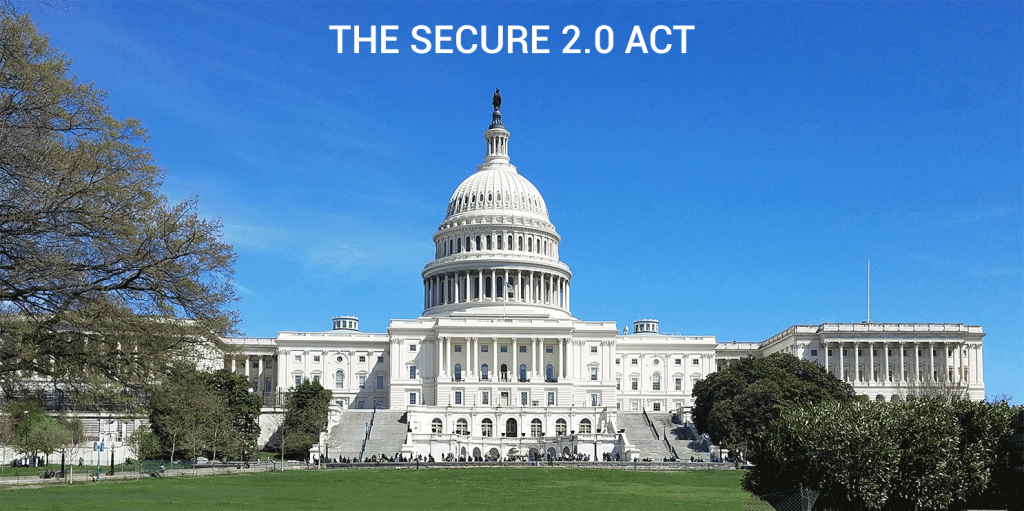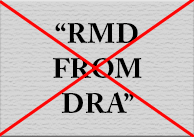Four Opportunities for 2024—Secure Act 2.0

Good to Know
A savvy financial advisor can help a client maximize key benefits in 2024 from the Secure Act 2.0, including:
- Required minimum distributions from Designated Roth Accounts,
- Emergency Savings Account,
- Student Loan 401(k) matching contributions, and
- 529 Plan to Roth rollovers.
The IRS has not clarified how these 2024 changes will be implemented. Hence, the discussions in this article are subject to change upon IRS clarifications. The information below is based on the current understanding of Secure Act 2.0. We’ll begin with RMDs for Designated Roth Accounts.
Goodbye to RMDs for Designated Roth Accounts
 Here’s the scenario—your client’s 401(k) plan balance includes $150,000 in a Designated Roth Account (DRA). Traditionally, your client would have had to take Required Minimum Distributions (RMDs) no later than their Required Beginning Date (RBD). The workaround in years past was to rollover the DRA into a Roth IRA. Here’s the good news for 2024—RMDs during the original owner’s lifetime are no longer required from a DRA for years beginning on or after January 1, 2024.
Here’s the scenario—your client’s 401(k) plan balance includes $150,000 in a Designated Roth Account (DRA). Traditionally, your client would have had to take Required Minimum Distributions (RMDs) no later than their Required Beginning Date (RBD). The workaround in years past was to rollover the DRA into a Roth IRA. Here’s the good news for 2024—RMDs during the original owner’s lifetime are no longer required from a DRA for years beginning on or after January 1, 2024.
Emergency Hardship Withdrawals
 Qualified plan sponsors may, but are not required to, add an emergency savings account to a qualified employer-sponsored retirement plan, such as a 401(k) plan. Distributions from this savings account can only be taken for unforeseeable and emergency expenses. Unlike traditional hardship withdrawals of the past, the participant can self-certify that the distribution will be used for unforeseeable or emergency expenses.
Qualified plan sponsors may, but are not required to, add an emergency savings account to a qualified employer-sponsored retirement plan, such as a 401(k) plan. Distributions from this savings account can only be taken for unforeseeable and emergency expenses. Unlike traditional hardship withdrawals of the past, the participant can self-certify that the distribution will be used for unforeseeable or emergency expenses.
Characteristics follow:
- Plan participants (employees) who are not considered highly compensated may contribute up to 3% of their compensation,
- The participant’s contribution may not exceed an indexed amount ($2,500 for 2024),
- Employer matching contributions are subject to an indexed limit (2,500 for 2024),
- Annual distributions are penalty-free up to $2,500 in 2024, and
- Distributed earnings are subject to income tax, but if the distribution is repaid within three years, any income tax paid on the distribution will be refunded by the IRS.
Survivors of domestic abuse may take emergency hardship withdrawals of up to $10,000.
Student Loan 401(k) Matching Contributions
Qualified plan sponsors may, but are not required to, make matching contributions from a participant’s student loan repayments—effective for years beginning on or after January 1, 2024. The purpose of this congressional largess is to help younger people, struggling to pay student loan debt, begin saving for retirement.
Here’s how it works—plan sponsor may treat qualified student loan repayments as employee elective deferrals for purposes of employer-matching contributions. Consequently, qualified student loan repayments are generally eligible for employer-matching contributions to a 401(k) plan.
As you’re reading this article, you may be thinking this issue is moot since the President decreed that student loan debts up to $20,000 would be canceled. In addition, student loan debt repayments are currently suspended. A case is currently before the Supreme to rule on this issue but under current law, repayments must resume effective in September 2023.
529 Plan Changes
Parents with over-funded their 529 College Saving Plan may be particularly interested in this opportunity. Effective for years beginning on or after 2024, beneficiaries may rollover up to $35,000 over their lifetime from a 529 College Savings Plan to a Roth IRA. You know what’s coming next—the requirements!
- 15-year requirement—the 529 College Savings Plan must have been open for at least 15 years,
- Owner/Beneficiary requirement—the owner of the ROTH IRA must also be the beneficiary of the 529 Plan,
- Compensation limit—the annual rollover amount may not exceed the beneficiary’s compensation, and
- Contribution limit—the rollover will count against the current year’s annual IRA contribution limit.
The Bottom Line
Before we conclude this article, we’d be remiss not to make you aware of the “forced Roth IRA contribution” rule. Age-related catch-up contributions can only be made in the form of after-tax contributions to a Roth account for years beginning on or after January 1, 2024. In closing, the advantages we summarized may resonate with some clients more than others. Either way, meeting with your client to make them aware of these changes will show that you’re on top of upcoming opportunities.
Disclaimer
The scope of this article does not permit us to cover all of the 2024 changes from the Secure Act 2.0. Contact your team’s financial planner for information of other changes that could impact your client.
The information presented herein is provided purely for educational purposes and to raise awareness of these issues; it is not meant to provide and should not be used to provide legal, identity theft protection, investment, income tax, risk management, retirement, estate, or financial planning advice of any kind. An experienced and credentialed expert should be consulted before making decisions relating to the topics covered herein. There are variations, alternatives, and exceptions to this material that could not be covered within the scope of this blog.
